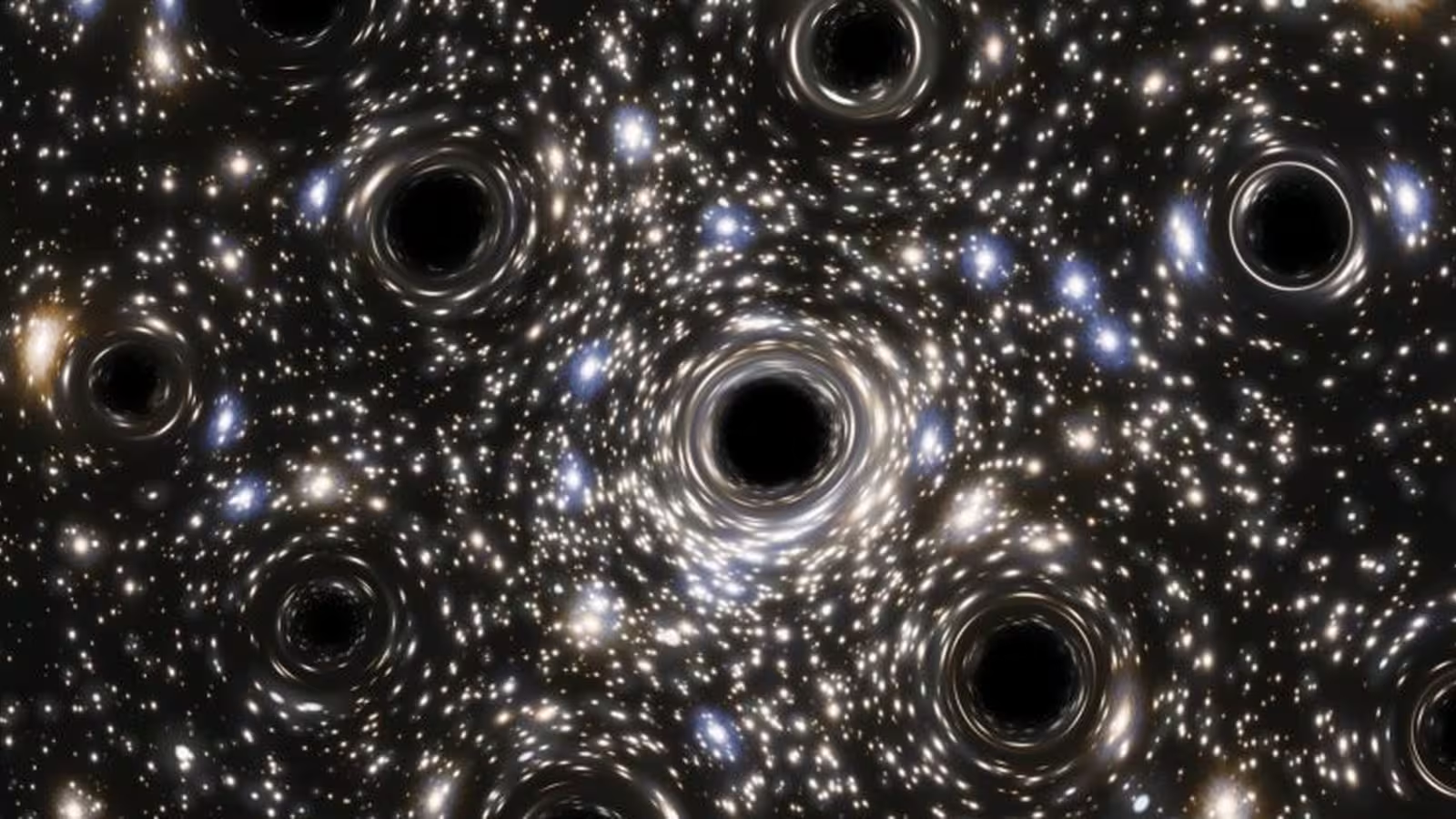5 Minutes
Understanding the Black Hole Landscape: The Search for the Missing Link
For decades, black holes have fascinated astronomers, serving as both cosmic mysteries and critical testbeds for our understanding of fundamental physics. These enigmatic objects are typically classified into three primary categories based on their mass: stellar-mass black holes, supermassive black holes (SMBHs), and the elusive intermediate-mass black holes (IMBHs).
Stellar-mass black holes, ranging from five to fifty times the mass of our Sun, result from the gravitational collapse of massive stars. At the other end of the spectrum, supermassive black holes tip the cosmic scales with masses millions to billions of times greater than the Sun, anchoring the centers of galaxies—including our own Milky Way.
However, for years, the existence of IMBHs—whose masses lie between these two extremes—has remained largely theoretical. IMBHs, thought to bridge the evolutionary gap between stellar black holes and SMBHs, have long been identified as the 'missing link' in our comprehension of black hole growth and galactic evolution. Establishing their presence is crucial to mapping the formation and progression of some of the universe's most massive objects.
Breakthrough Observations: Detecting Elusive Intermediate-Mass Black Holes
In a series of groundbreaking studies, an international consortium spearheaded by Vanderbilt University's Lunar Labs Initiative (LLI) has made a compelling case for the existence of IMBHs. The research, co-led by astronomers Krystal Ruiz-Rocha and Anjali Yolkier, delved deep into extensive datasets produced by the Laser Interferometer Gravitational-Wave Observatory (LIGO) and the Virgo Collaboration.
By meticulously reanalyzing gravitational-wave signals—subtle ripples in the fabric of space-time generated by catastrophic cosmic events—the team identified merger events between black holes weighing between 100 and 300 solar masses. These mergers represent the most massive black hole collisions ever recorded by gravitational wave observatories, placing them firmly within the long-predicted mass range of IMBHs.
Senior study author Karan Jani described these findings as transformative. "Black holes are the ultimate cosmic fossils," he noted. "The masses of black holes reported in this new analysis have long been speculative. This new population opens an unprecedented window into the earliest generations of stars that brought light to our universe."
Future Missions and Technological Frontiers: From LISA to Lunar Observatories
Looking ahead, the astronomical community is preparing for next-generation gravitational-wave detectors like the European Space Agency's Laser Interferometer Space Antenna (LISA), slated for launch in the late 2030s. LISA's revolutionary design will allow for the continuous and long-term monitoring of inspiraling black hole pairs, offering the ability to track their trajectories for years prior to collision—a marked advancement over terrestrial detectors such as LIGO and Virgo, which are sensitive primarily to the immediate pre-merger phases.
This leap in observational capability is expected to provide unparalleled insights into the origins, evolution, and fate of IMBHs. As Ruiz-Rocha commented, "We hope this research makes a compelling case for intermediate-mass black holes as some of the most fascinating astrophysical sources to be observed both from Earth and from space. Every new detection brings us closer to unraveling why these objects hold such unique masses in the cosmic inventory."
Further down the scientific roadmap, the team envisions futuristic observatories on the lunar surface, harnessing the Moon’s seismically quiet and gravitationally stable environment. NASA's Artemis program, drawing inspiration from the Apollo 17 mission's Lunar Surface Gravimeter experiment, is actively exploring the feasibility of placing advanced gravitational-wave detectors on the Moon. Such installations could dramatically enhance humanity's ability to detect more subtle or distant black hole mergers, potentially revolutionizing our understanding of the universe.
Conclusion
The potential detection of intermediate-mass black holes marks a pivotal moment in the story of cosmic evolution, helping to fill a critical gap between known black hole classes. These discoveries not only reshape our understanding of how black holes grow and interact but also herald a new era of space science—uniting Earth-based, spaceborne, and potentially lunar observatories in a coordinated quest to unravel the universe’s deepest secrets. As future missions like LISA and lunar gravitational-wave detectors come online, scientists are poised to unlock even more profound insights, training the next generation of researchers at the intersection of astrophysics and space exploration.
Source: sciencealert


Leave a Comment